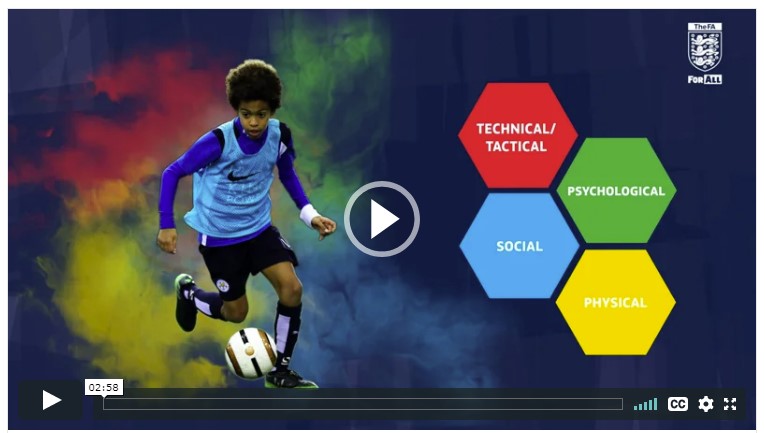The FA 4 Corner Model suggests that player development needs to be looked at from a technical, physical, psychological and social point of view – and that no corner works in isolation from the others.
The model can be applied to all players, regardless of age or ability. Everyone is different and players will have their own individual needs at any point in their development. The FA 4 Corner Model was developed by Craig Simmons, former FA player development advisor, who says: “The skill of the coach is based on how to adapt to meet individual needs. One player may need a lot of support in the technical corner, another in the physical and so on. The process of meeting individual needs is often referred to as 'differentiation' and the skill of the coach is to provide slightly different, yet appropriate, support to best meet the needs of the players they coach.” When considering the four corners, it’s important to always remember that we’re dealing with young people and to never lose sight of the human aspect of that. What the FA 4 Corner Model provides is a ‘thinking tool’, or a ‘lens’, that coaches can use for their observations, reflections and decisions on how to best support players’ individual needs. It can be used to consider where young people are in their overall development as well as their playing capabilities, performance and potential. VIEW 4 Corner Model
The FA 4 Corner Model emphasises the relationship between the different corners, but specific focus can be put on any one of the corners in order to meet a player’s individual needs.
A player’s actual chronological age as well as their individual levels of maturity is considered – players could be mature or immature for their age in many aspects of each corner. For example, within the technical corner a player could be mature in terms of their technique but immature in terms of tactical decision-making. So the differences between players have to be understood and managed by the coach to meet their individual needs.

